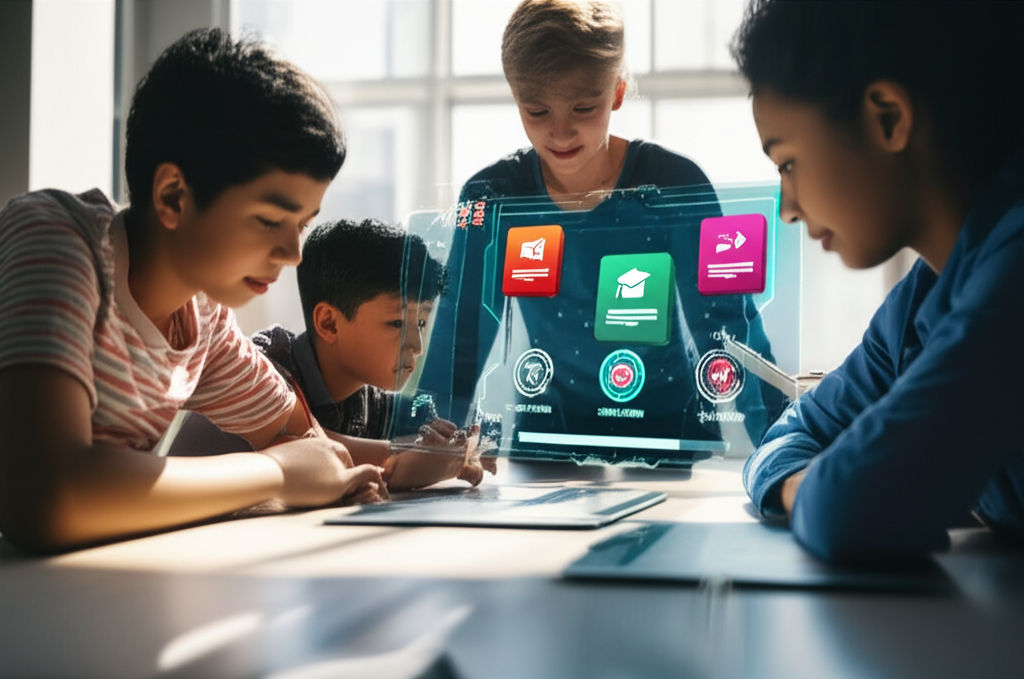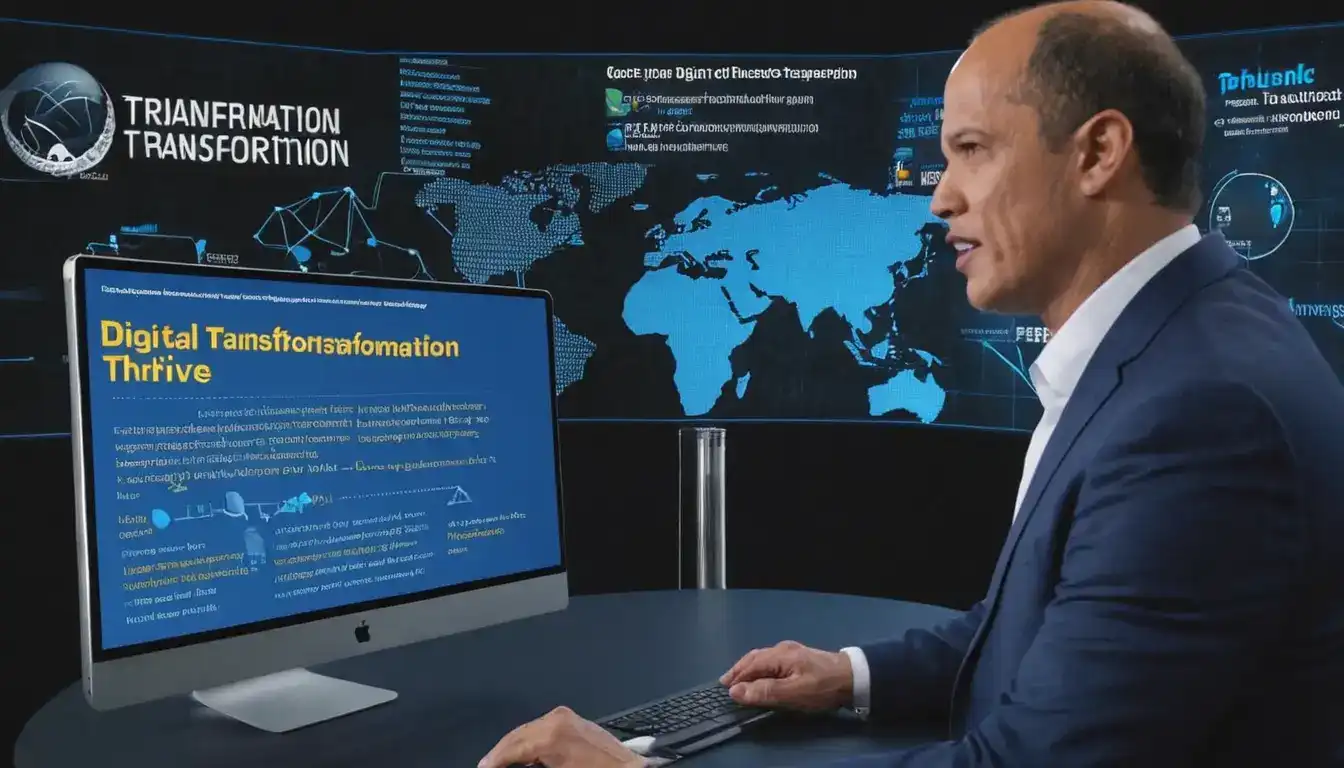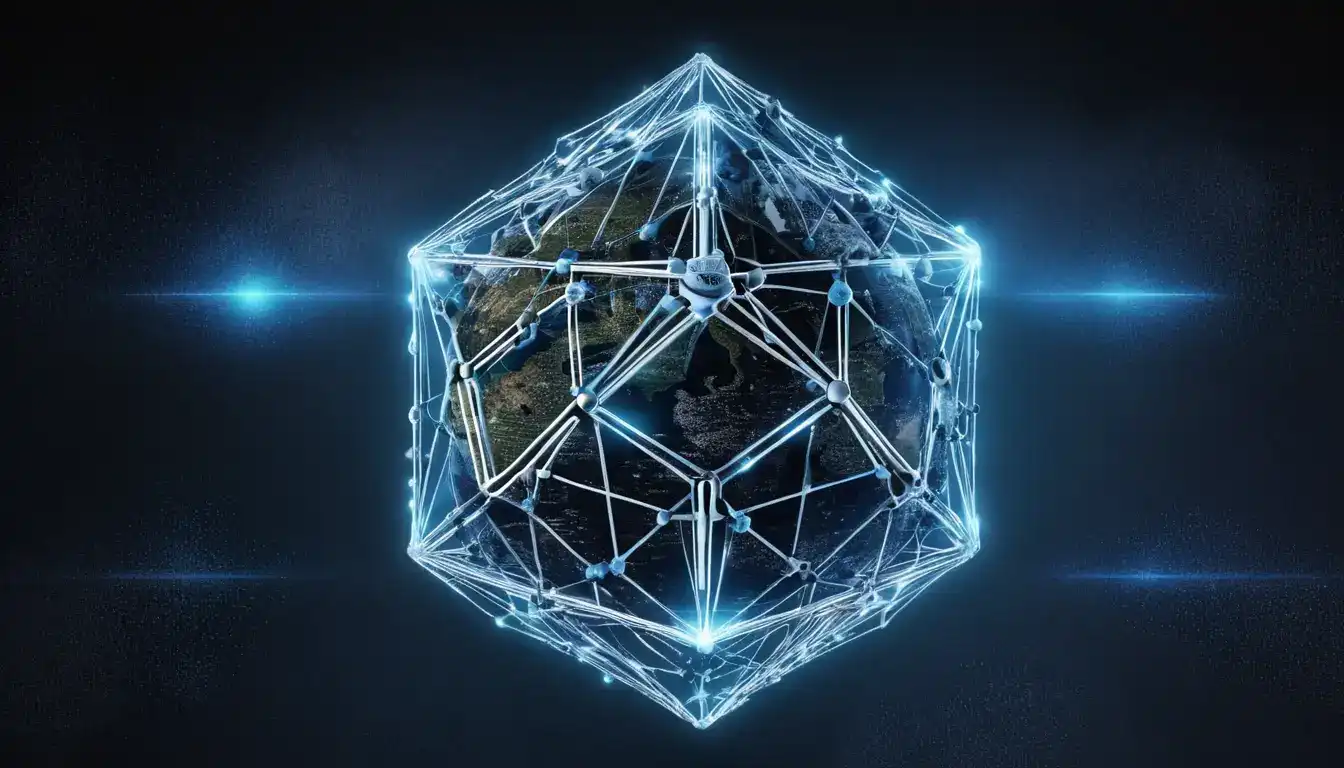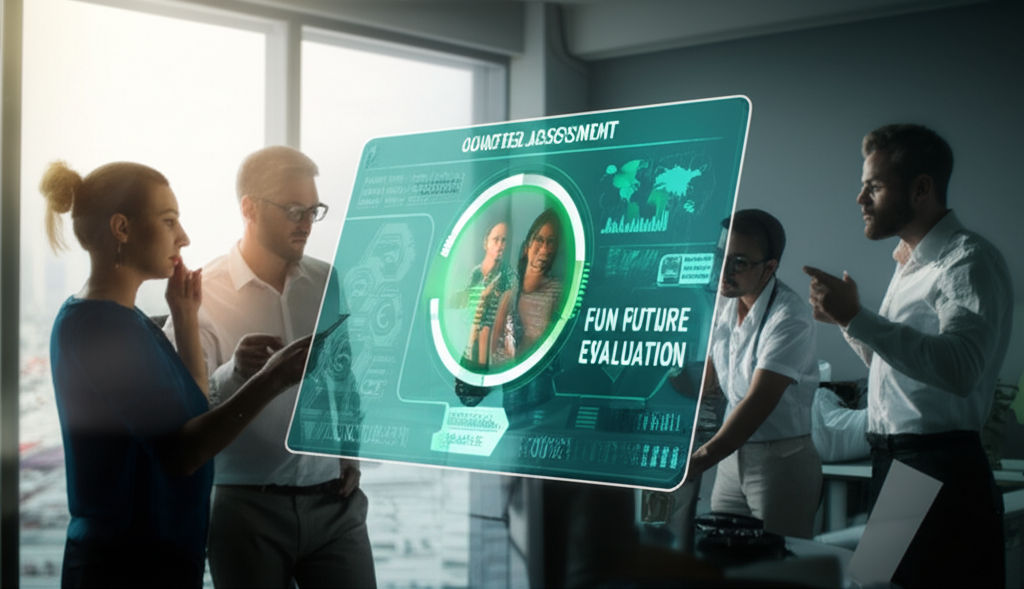Gamification: Make Learning Fun Tomorrow
Emily Willis

Photo: Gamification: Make Learning Fun Tomorrow
Gamification: Making Learning Fun Tomorrow
Remember those days in school when learning felt like a chore? Endless textbooks, monotonous lectures, and the constant pressure of exams often sucked the joy right out of discovering new things. But what if learning could be as exciting and engaging as your favorite video game? What if every new skill felt like unlocking a new level, and every piece of knowledge gained was a reward? Welcome to the world of gamification, where learning is not just effective, but genuinely fun.
Tomorrow's learning isn't about ditching traditional methods entirely, but rather about infusing them with the powerful, motivating elements of games. This isn't just a trend; it's a transformative approach that's already reshaping how we acquire knowledge, from classrooms to corporate training rooms and beyond. It’s about leveraging our innate human desire for play, achievement, and social connection to make education a truly engaging journey.
What Exactly is Gamification in Learning?
At its core, gamification is the strategic application of game design elements and game principles in non-game contexts to engage users and solve problems. Think about it: points, badges, leaderboards, challenges, and rewards – these are all familiar aspects of games. When applied to learning, these elements don't just make the process more enjoyable; they tap into our intrinsic motivation, encouraging deeper engagement and better knowledge retention. It's not about turning education into a full-blown video game, but rather borrowing the mechanics that make games so captivating and applying them to educational content.
This innovative approach goes beyond simply playing educational games. It involves weaving game-like structures into the very fabric of the learning experience, creating a dynamic environment where learners are active participants, not just passive recipients of information.
Why Gamification is a Game-Changer for Learning
The benefits of integrating gamification into learning are extensive and impactful, touching on various aspects of cognitive and emotional engagement.
Boosting Engagement and Motivation
One of the most significant advantages of gamification is its ability to dramatically increase learner engagement and motivation. When learning feels like a game, people are naturally more inclined to participate and persevere. Studies show that gamified learning can lead to a substantial increase in student performance, with one study reporting an 89% increase in student performance through challenge-based gamified learning. Another found that 83% of employees undergoing gamified training feel motivated, compared to just 61% in non-gamified settings. This surge in motivation stems from the immediate feedback, clear goals, and sense of accomplishment that gamified systems provide.
Enhancing Knowledge Retention
It's not just about getting people to participate; it's about helping them remember what they've learned. Gamification significantly improves knowledge absorption and retention. When learners are actively involved and emotionally invested, information sticks. Gamified learning experiences reinforce concepts through repetition, feedback loops, and rewarding successful application, which can increase retention rates by as much as 90% in some cases. This is because it transforms passive learning into an active, memorable experience.
Fostering Skill Development and Problem-Solving
Games are inherently about challenges and problem-solving. By introducing these elements into learning, gamification cultivates critical thinking, strategic planning, and practical application of knowledge. Learners are encouraged to experiment, make decisions, and see the immediate consequences of their choices in a risk-free environment. This active problem-solving leads to a deeper understanding and mastery of skills.
Promoting Collaboration and Social Interaction
Many gamified learning experiences incorporate social elements like team challenges, leaderboards, and peer-to-peer learning. This fosters a sense of community and friendly competition, encouraging learners to collaborate, share knowledge, and support each other's progress. This social interaction not only boosts motivation but also enriches the learning experience by exposing learners to diverse perspectives.
The Science Behind the Fun: How Gamification Works
The effectiveness of gamification isn't just anecdotal; it's rooted in psychology. It taps into several core human motivators:
- Achievement and Mastery: We all love to succeed. Points, badges, levels, and progress bars provide clear indicators of achievement, fueling our desire to master new skills and advance.
- Feedback and Progress: Immediate feedback is crucial for learning. Gamified systems provide instant validation, letting learners know what they're doing right and where they need to improve, reinforcing positive behaviors and encouraging self-assessment.
- Competition and Cooperation: Whether it's competing against others on a leaderboard or collaborating with a team to achieve a shared goal, these elements leverage our social instincts to drive engagement.
- Autonomy and Control: Gamification often gives learners choices, allowing them to progress at their own pace or choose their learning path, which fosters a sense of control and ownership over their learning journey.
- Curiosity and Unpredictability: Just like a good story, games keep us hooked with unexpected elements and the desire to discover what comes next. This stimulates curiosity and keeps learners engaged.
Key Elements of Gamified Learning
To effectively gamify learning, various elements are strategically employed:
- Points: Awarded for completing tasks, answering questions correctly, or participating. They offer a tangible measure of progress and effort.
- Badges: Digital awards earned for achieving specific milestones or mastering skills. They provide recognition and a sense of accomplishment.
- Leaderboards: Display rankings of learners based on points or achievements, fostering friendly competition and motivating individuals to improve their standing.
- Levels: Represent progression through the learning material, with increasing difficulty or complexity. Unlocking new levels provides a sense of advancement and encourages continued effort.
- Challenges/Quests: Specific tasks or problems that learners must overcome to progress. These make learning active and goal-oriented.
- Immediate Feedback: Instant responses to actions, whether it's a correct answer, a completed task, or a mistake. This helps learners understand their performance and adjust quickly.
- Storytelling/Narratives: Embedding learning within a compelling story or scenario makes it more immersive and relatable, providing context and purpose.
- Avatars & Customization: Allowing learners to personalize their virtual representation fosters a sense of ownership and identity within the learning environment.
- Progress Bars: Visual indicators showing how far a learner has come and how much is left, providing a clear sense of progression.
Gamification in Action: Real-World Examples
Gamification is being successfully implemented across diverse sectors, transforming how people learn and develop.
In Education (K-12 and Higher Ed)
- Duolingo: This wildly popular language-learning app uses streaks, levels, points, and leaderboards to make learning a new language addictive and fun. Users earn points for correct answers, maintain "streaks" for daily practice, and compete with friends.
- Kahoot!: A game-based learning platform that transforms quizzes into interactive, competitive games, widely used in classrooms and corporate training for quick engagement and assessment.
- Minecraft Education Edition: Leveraging the popularity of Minecraft, this edition allows students to learn subjects like history, science, and coding through creative building and problem-solving in a virtual world.
In Corporate Training and Professional Development
- Onboarding Programs: Many companies use gamified modules to introduce new employees to company culture, policies, and systems, making the often-dry material more engaging and memorable.
- Sales Training: AstraZeneca's "Go to Jupiter" game successfully trained 500 sales agents on a new drug, with 97% engagement, by incorporating team competitions, mini-games, and leaderboards.
- Skill Development: Platforms like TalentLMS integrate points, badges, levels, and leaderboards to motivate employees through compliance training and skill acquisition, leading to increased productivity and engagement. Companies report that employees retain 22% more information when trained using gamified solutions.
- Employee Engagement: Beyond formal training, gamification is used to make daily tasks more interactive and rewarding, boosting productivity and fostering a positive work environment. 90% of employees report that gamification makes them more productive at work.
In Everyday Skill Acquisition
- Fitness Apps: Apps like Zombies, Run! turn exercise into an immersive game, motivating users through narrative progression, virtual rewards, and challenges.
- Financial Literacy Apps: Some banking apps gamify saving and investing, turning financial goals into achievable quests with rewards for hitting milestones.
Designing Your Own Gamified Learning Experience: Actionable Steps
Ready to bring the fun of gamification to your own learning or teaching? Here are some practical steps:
- Define Your Learning Goals: Before you think about game mechanics, clearly outline what you want learners to achieve. What knowledge or skills should they gain? What behaviors should they adopt?
- Understand Your Audience: Who are your learners? What motivates them? Are they competitive, collaborative, or driven by personal mastery? Tailoring the game elements to their preferences is key to effective engagement.
- Choose Appropriate Game Mechanics: Select game elements that directly support your learning goals and resonate with your audience.
- For knowledge acquisition, consider quizzes with immediate feedback and points.
- For skill mastery, implement levels that unlock as proficiency increases.
- For team-building, introduce collaborative challenges or team-based leaderboards.
- Craft a Compelling Narrative (Optional but Recommended): A story can provide context and make the learning journey more immersive. Even a simple theme, like "becoming a master chef" for a
Latest ✨
View AllUnlock your next great business idea! Learn a structured process to discover, evaluate, and refine entrepreneurial opportunities for real-world success.
Emily Willis
Unlock your financial superpower! Learn why financial literacy is crucial for a secure future & how to easily master money management for true independence.
Emily Willis
Craft a winning pitch deck! Learn to transform your vision into a compelling presentation that captivates investors & unlocks opportunities.
Emily Willis
Discover the blended teacher: how educators are transforming learning by combining traditional & online methods for personalized, engaging education.
Emily Willis
Business
View All
August 4, 2024
Digital Transformation: Businesses Leverage Technology to Thrive in the Digital AgeThe business world is evolving rapidly, with consumers expecting seamless digital experiences. Digital transformation involves integrating technology, focusing on customers, making data-driven decisions, and fostering innovation.
Emily Willis

August 5, 2024
Tips for Maintaining a Balance Between Work and Personal LifeAchieving a healthy work-life balance is essential for overall well-being, productivity, and happiness. Setting clear boundaries, prioritizing self-care, managing time effectively, nurturing relationships, and learning to unplug are key strategies to maintain this balance. It is important to communicate your needs effectively, seek support, and delegate tasks when necessary.
Emily Willis

June 9, 2025
Business Resilience in Uncertain TimesUnlock business resilience! Prepare for, adapt to, and overcome challenges. Transform uncertainty into opportunity and build a stronger, future-proof business.
Emily Willis
Economy
View AllUnlock global growth potential! Discover dynamic emerging markets, their rapid economic expansion, vast opportunities, and how to navigate complexities.
Read MoreGlobalization has reshaped the economic landscape, connecting countries and markets like never before. For emerging economies, this presents both challenges and opportunities. Challenges include economic vulnerability, income inequality, job displacement, and environmental impact.
Read MoreCentral banks are facing unique challenges in the current economic landscape, including rising inflation, geopolitical tensions, and lingering effects of the pandemic. They have a set of tools at their disposal, such as monetary policy, open market operations, and reserve requirements, to influence the economy.
Read MoreEntertainment
View All
August 4, 2024
The Evolution of Digital Distribution in the Music Industry: Challenges and OpportunitiesThe music industry has been transformed by digital distribution, which allows quick access to a vast catalog of music through streaming services and online stores.
Emily Willis

August 5, 2024
Classic Films: Timeless Masterpieces in the Age of StreamingClassic films may seem outdated in today's world of instant gratification and endless streaming options, but they offer enduring stories, masterful storytelling, historical insights, technical innovation, and artistic value that surpass modern offerings. While classic films face challenges such as accessibility and pacing, there are ways to overcome these obstacles, such as using streaming services, visiting local libraries, attending film festivals, and utilizing online resources.
Emily Willis

August 4, 2024
The Latest Music Trends, Artists Influencing Pop Culture, and How Digital Platforms Facilitate the Distribution of Music GloballyThe music industry is constantly changing due to consumer preferences, technology, and the influence of artists. Digital platforms have revolutionized music creation, distribution, and consumption, leading to genre fusion, the rise of independent artists, and collaborative projects. Influential artists like Billie Eilish, BTS, and Taylor Swift have shaped pop culture globally. Streaming services, social media, and direct-to-fan engagement have transformed music distribution. Digital platforms also promote cultural diversity and inclusivity, expand markets and revenue, and drive technological advancements. The industry is also focusing on sustainability and ethical practices. To succeed in the future, stakeholders must embrace digital transformation and champion inclusivity.
Emily Willis
Health
View AllRegular physical activity is crucial for maintaining long-term health and well-being. It has numerous benefits, including improving cardiovascular health, aiding in weight management, enhancing mental health, strengthening bones, boosting immune function, and promoting longevity.
Emily Willis
Quality sleep is essential for overall health and well-being, impacting physical, cognitive and emotional functioning. Lack of quality sleep can lead to a variety of health issues, including weakened immune function, heart problems, weight gain and cognitive impairment.
Emily Willis
Preventive healthcare focuses on strategies to prevent disease and maintain well-being, rather than just treating illnesses after they arise. It helps identify risk factors early on, allowing for interventions that can prevent or delay the onset of chronic diseases.
Emily Willis
Trending 🔥
View All
1
2
3
4
5
7
8
9
10
Lifestyle


Sports
View AllAugust 5, 2024
Sports for Social Good: Promoting Diversity, Inclusion, and Community Engagement
Read MoreAugust 5, 2024
The Future of Sports: Anticipating Trends, Embracing Innovation, Shaping a New Era
Read MoreTechnology
View All
August 4, 2024
The Future of Artificial Intelligence: Opportunities and Challenges
opportunities and challenges presented by Artificial Intelligence (AI) in various sectors such as efficiency, customer experiences, healthcare, education, and economic growth. It highlights the need to address ethical considerations, job displacement, privacy issues, security risks, and regulatory challenges associated with AI.

August 5, 2024
Benefits of Using Cloud Computing for Your Business
Cloud computing has revolutionized business operations by offering cost savings, scalability, improved collaboration, enhanced security, and robust disaster recovery. It allows businesses to access services over the internet, reducing the need for physical infrastructure and providing flexibility.

August 5, 2024
AI Trend Predictions for 2024 and beyond
AI is no longer a futuristic concept, it is shaping our world at an unprecedented pace. In 2024 and beyond, AI trends are likely to dominate in various industries. Generative AI is expected to revolutionize content creation, design, and product development. In healthcare, AI will lead to personalized medicine, drug discovery acceleration, improved diagnostics, and remote patient monitoring.

August 5, 2024
The Impact of AI on the Future of Work and Education
AI is rapidly advancing and reshaping industries, economies, and societies, especially in the areas of employment and education. In the workplace, AI is changing roles through automation and creating new job opportunities. The future of work will most likely involve collaboration between humans and AI, requiring workers to develop new skills and engage in lifelong learning.



















